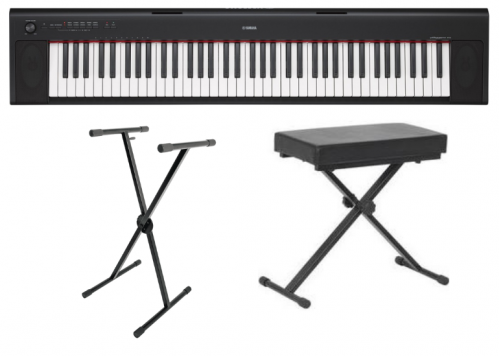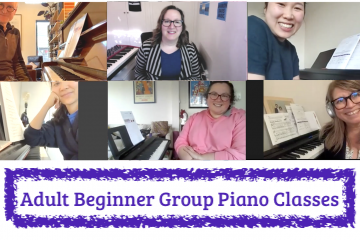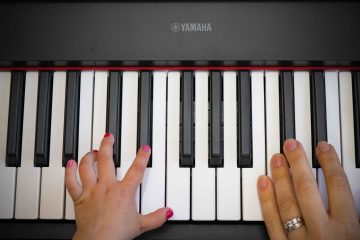Decided you want piano lessons but don’t have a piano yet? Everything you need to know to choose a piano or keyboard. We can help!
You’ll need to decide if you want to choose:
- Electric or digital piano or
- Acoustic piano
There’s pros and cons for both when you choose a piano or keyboard.
Acoustic pianos (“real” pianos)
Upsides:
- Look great
- Sound great (if they’re in good condition)
- Great dynamic range – really soft to really loud.
Downsides:
- Price – it’s a bit like buying a car. A cheap one might require a lot of maintenance to work properly. Expensive ones can cost hundreds of thousands of $
- Get some advice from an expert before you buy one
- They take up more space
- They need tuning from time to time. (Less often if they’re in fairly stable humidity and temperature. Best to have them against an internal wall if possible.)
- They need specific removalists if you move house
Digital pianos
Upsides:
- Always in tune
- Smaller options (A full size digital piano is 88 keys, the same as an acoustic piano. There are also 76 or 73 note, and 61 note digital piano options.)
- Cheaper
- You can move them yourself
- Some have permanent legs and pedals
- Most have headphone sockets, so the person practicing won’t disturb others in the room, and they won’t disturb the person practicing.
Downsides:
- May not have the same dynamic range
- There aren’t actual string vibrating inside, so there’s no “sympathetic vibration.” Sympathetic vibration is when string from some other notes also vibrate when you play certain notes, creating a richer tone. (This isn’t a dealbreaker for beginner students)
- 61 keys is ok to start, but you’ll probably want to progress to at least 73 keys later on.
Other things to think about:
- Some digital pianos have great sampled piano sounds, where they’ve recorded “sampled” actual pianos. Cheaper options have pretty bad sounding impressions of a piano. Try before you buy!
- You want touch sensitive keys (Press harder = sounds louder and more forceful. Press softer = sounds quieter and more delicate, like an acoustic piano.)
- You want weighted keys, or at least semi-weighted keys. This is to mimic what it feels like to play an acoustic piano, where pressing the keys is causing a small hammer to hit some strings.
Synthesizers
Synthesizers can have literally hundreds of sounds, (and may or may not have good piano sounds.) Pro keyboard players use all sort of sounds like Hammond organ, electric piano and sometimes cover other instruments parts that aren’t present, for example strings. These aren’t required for beginners and all the extra buttons might be a distraction.
What will the Keyboard sit on, and what will the student sit on?
Some keyboards come with permanent legs. Other are just the keyboard, so you’ll need a stand to put it on. You’ll need to make sure it’s the right height, so putting it on a table isn’t ideal.
You’ll also need a stool, which also needs to be at the right height.
It’s really important to be able to sit comfortably, without having to reach up to the keys. Your elbow and the keys need to be at the same height, without having move them away from your body, or lift your shoulders.
Headphones
Most keyboard headphone sockets are the larger size Jack plugs. Your phone or computer headphones use the smaller size ones, so you would need an adaptor, or another set of headphones.
Some pro keyboards don’t include internal speakers, which means you need headphones or an amplifier to be able to hear anything. Make sure you check this so you don’t get any surprises!
Hire or buy a digital piano?
Not sure about your decision to choose a piano or keyboard? You can hire keyboards (usually for a minimum of around 6 months) if you’re not totally sure if piano is for you. Some stores will reduce the sale price for you if you decide to buy it at the end of the hire period.
MIDI
One last tip – don’t buy a MIDI (Musical Instrument Digital Interface) keyboard. They don’t have any sounds in them at all! They’re used when connecting to computers or other sound sources, so not what a beginner needs.
Choose a piano or keyboard
So in summary – look at your requirements, your budget and see what works for you.
Need a quick easy solution?
We’ve taken the “analysis paralysis” out of the equation for you: Order our Keyboard, Stand and Stool package, and we’ll get it delivered to you in a few days (Melb metro).

Need Piano Lessons? Click here…

